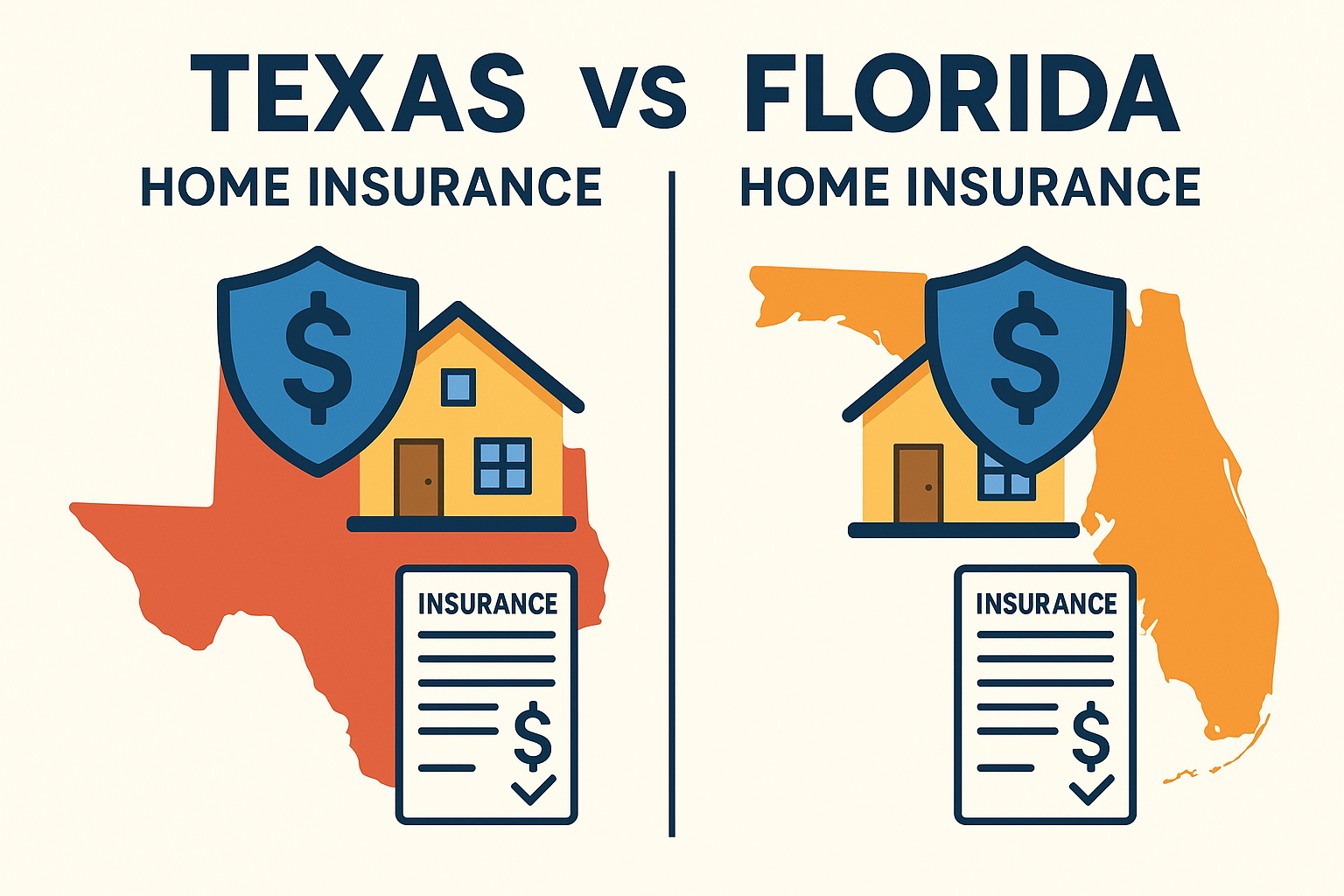Home insurance is an essential part of protecting your property, especially if you live in a state known for extreme weather. Many homeowners in Texas and Florida face unique challenges when it comes to finding the proper coverage. If you are shopping for home insurance or want to understand the differences between these two states, it helps to know what sets each apart. In Texas and Florida, home insurance is more than just basic protection. It often involves specific risks that can significantly impact costs and coverage. By comparing the details, you can make more informed decisions about your home and budget. Understanding these differences helps you avoid surprises and get the peace of mind you deserve.
Understanding Home Insurance Basics in Texas and Florida
Home insurance serves as a financial safety net for homeowners in both Texas and Florida. In most cases, standard policies in each state include coverage for your home’s structure, your personal belongings, liability protection, and additional living expenses if you need to move out during repairs. However, in both states, home insurance policies typically do not cover everything, so homeowners often require additional endorsements or separate policies to address specific risks.
Both Texas and Florida have unique natural hazards that make home insurance essential but also more complex. Texas experiences tornadoes, hailstorms, and even occasional earthquakes. Florida is especially vulnerable to hurricanes and flooding. As a result, insurers in both states sometimes exclude specific perils or require you to purchase additional coverage for issues such as wind damage or flooding.
Homeowners should read their policies carefully to understand what is and is not covered. It is common for people in both states to purchase additional policies to cover floods, windstorms, or hurricane damage. An insurance agent familiar with your state can help explain your options. Knowing the basics puts you in a better position to protect your property from the risks that are most likely in your area.
Key Differences in Home Insurance Costs
Home insurance costs can vary widely between Texas and Florida. Florida typically sees higher premiums compared to Texas due to the frequent threat of hurricanes. Insurance companies in Florida like FloridaInsuranceQuotes.net/florida-homeowners-insurance/ often pay out large amounts for claims after a big storm, which leads to higher rates for everyone. Texas rates are also high, especially in certain areas, but tend to be lower overall compared to Florida.
Location is a significant factor for both states, with coastal areas facing the highest costs. In Florida, homes along the Gulf or Atlantic coasts pay some of the highest premiums in the country. In Texas, coastal regions near the Gulf of Mexico tend to have higher rates, but inland areas often offer more affordable options. The condition, age, and size of your home will also influence your costs.
Both states also experience price increases if there are changes in local weather patterns or if recent natural disasters have occurred. Insurance providers adjust their rates to reflect their risk so that premiums can rise quickly after a bad hurricane season in Florida or a series of tornadoes in Texas. Staying informed about these trends can help you budget effectively and select the most suitable policy.
Factors Affecting Coverage in Each State
State regulations and common weather risks shape home insurance coverage. In Texas, insurers often focus on protection against wind, hail, and fire. However, flooding is usually not included in a standard policy. Homeowners in flood-prone areas typically require separate flood insurance, often obtained through the National Flood Insurance Program.
Florida homeowners need to consider hurricane and windstorm coverage more than most other states. Many policies in Florida do not automatically include windstorm protection. As a result, savvy shoppers will want a separate policy or endorsement for complete coverage. Flooding is also a significant concern, and like Texas, carriers do not include it in standard home insurance. The unique weather patterns in each state make it essential to understand and fill any gaps in your coverage.
Insurance companies in both states also look at your home’s construction, its distance from water, and even your home’s roof type when deciding your rates and coverage options. Stronger materials and new roofs often lower your premium. Being proactive about upgrades and maintenance can help you get better coverage and possibly reduce your costs.
Common Challenges for Texas and Florida Homeowners
Homeowners in Texas and Florida face several challenges when buying and maintaining home insurance. In Florida, the frequent threat of hurricanes means that policies often come with high deductibles for wind damage. Claims can also take longer to process when a large number of people are affected by the same disaster. Some insurers have even stopped writing new policies in certain parts of Florida due to repeated losses.
Texas homeowners frequently face challenges with hail and wind damage, resulting in increased claims and sometimes stricter policy requirements. Wildfires and tornadoes can also cause widespread losses, which may push insurance companies to raise rates or limit coverage. Some Texans may need to turn to state-backed insurance programs when private carriers withdraw from high-risk areas.
Both states have seen rising insurance premiums and increased scrutiny from insurance companies. Homeowners sometimes struggle to find affordable coverage or face higher costs after making claims. Staying prepared and knowing your options helps you weather these challenges and find the best possible protection for your home.
Tips for Choosing the Best Home Insurance Policy
Start by assessing the risks specific to your home’s location. In Texas and Florida, you may need to buy extra coverage for floods, windstorms, or hurricanes. Compare policies from several insurance companies and pay attention to what they do and do not include. Consider the deductibles, especially for wind and hurricane damage, as these can be significantly higher than for other types of claims.
Work with an experienced insurance agent in your area. For example, in Texas, try a website like https://Texasquotes.com/homeowners-insurance-quotes-texas/ to find the best rates. Local agents in Texas and Florida are well-versed in the unique risks associated with these states and can help you find suitable coverage. Ask about discounts for items such as wind-resistant roofs, storm shutters, or home security systems. These upgrades not only protect your home but can also save you money on your premium.
Review your policy each year, especially after significant home improvements or changes in local weather patterns. Keeping your coverage up to date ensures that you do not leave yourself vulnerable to gaps when disaster strikes. Remember to ask questions and carefully read the fine print before signing any documents. Taking a proactive approach leads to better coverage and fewer surprises in the future.
Conclusion
Comparing home insurance in Texas and Florida requires careful attention to each state’s unique challenges. While both states face risks from severe weather, the specific threats and insurance requirements differ. Florida homeowners must contend with frequent hurricanes and high insurance costs, while Texans face tornadoes, hail, and wildfires. Coverage gaps, high deductibles, and changing premiums are common frustrations for residents of both states. By understanding your risks and comparing policies carefully, you can take steps to protect your home and belongings. Choosing the right insurance often means working closely with local agents who are familiar with the hazards in your area. Remember to review your policy regularly and make updates as needed. Smart home improvements can help lower your costs and strengthen your coverage. With the right approach, you can navigate the complexities of home insurance in Texas and Florida. The result is better protection for your most significant investment and much-needed peace of mind.



